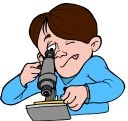
Worksheets and No Prep Teaching Resources
Reading Comprehension Worksheets
Earth Science

Earth Science
 Worksheets and No Prep Teaching Resources Reading Comprehension Worksheets Earth Science |
 Earth Science |
| edHelper's suggested reading level: | high interest, readability grades 6 to 7 | |
| Flesch-Kincaid grade level: | 6.41 |
| Print The Planet Facts! Part 1 (font options, pick words for additional puzzles, and more) |
| Quickly print reading comprehension |
| Print a proofreading activity |
|
The Planet Facts! Part 1
By Trista L. Pollard |

|
 1 Our planet is unique. We are one of eight planets in our solar system. Yet, Earth is the only planet with liquid water on its surface. We also have an atmosphere filled with valuable oxygen. These are some of the interesting facts earth scientists study. As you may have guessed, there are a lot more interesting facts about our planet.
1 Our planet is unique. We are one of eight planets in our solar system. Yet, Earth is the only planet with liquid water on its surface. We also have an atmosphere filled with valuable oxygen. These are some of the interesting facts earth scientists study. As you may have guessed, there are a lot more interesting facts about our planet. |
Create Weekly Reading Books
Prepare for an entire week at once! |
| Leave your feedback on The Planet Facts! Part 1 (use this link if you found an error in the story) |
 |
Earth Science
|
 |
Special Education Science Materials for Teachers
|